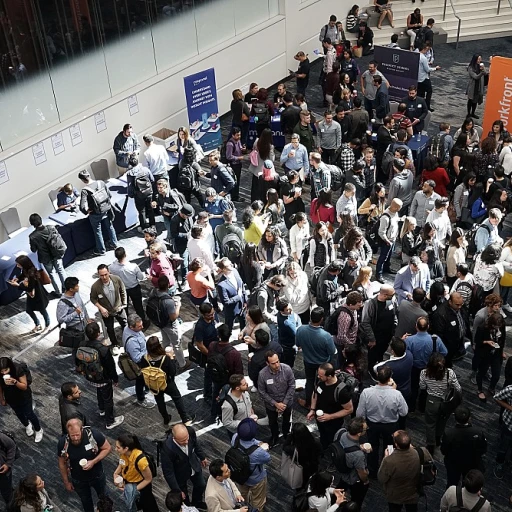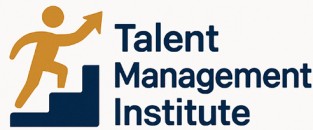
Understanding Centralized HR Systems
Grasping the Concept of Centralized HR Systems
In the realm of talent management, the approach organizations adopt can significantly influence their ability to adapt and thrive. One model that is gaining traction is the centralized HR system. These systems centralize the human resource functions within a central department as opposed to a decentralized recruitment process. By consolidating various HR components, businesses aim to streamline processes and improve the effectiveness of talent management. The centralized model encompasses an organized structure where the central team oversees critical activities such as data management, employee engagement, and recruitment. Unlike the decentralized structures, where different teams or departments handle HR processes independently, a centralized approach ensures uniformity in strategic initiatives and policies procedures. Centralized HR systems facilitate a more synchronized management of employees, offering a bird’s-eye view into performance management and employee experience. This real-time data access supports data-driven decision making, enabling businesses to respond promptly to workforce needs and streamline the hiring process. For those interested in the evolution of HR systems, it's insightful to look into how ATS systems have transformed over time. This transformation highlights the significance of centralizing HR functions to meet the demands of future growth and efficiency in employee management. Understanding the nuances of a centralized system is vital for any organization. Whether it's enhancing employee engagement or improving the hiring process, the centralized model offers robust solutions that align with long-term strategic goals. Organizations must also remain cognizant of potential challenges and the importance of maintaining flexibility to adapt to future trends in centralized HR.Streamlining Talent Acquisition
Optimizing Talent Acquisition through Centralized Systems
In today's competitive business environment, effective talent acquisition is crucial. Centralized HR systems offer a streamlined approach to recruitment, differentiating them from decentralized models. By housing all recruitment processes under one centralized management system, organizations can create a more cohesive strategy.
This centralized recruitment model allows for strategic alignment, ensuring that the hiring process is consistent across departments. By integrating policies and procedures, a central team can manage each phase of recruitment more efficiently, resulting in reduced time-to-hire and enhanced employee experience.
Moreover, data management plays a significant role in optimizing talent acquisition. With a centralized system, an organization can leverage data to make informed decisions. Real-time data access helps in evaluating the effectiveness of recruitment campaigns, enhancing decision-making processes for long-term strategic initiatives.
Centralized systems also facilitate collaboration between HR and management, ensuring that there is a collective effort in talent management. Organizations aiming to improve their recruitment strategies can explore more on navigating the world of digital talent management for deeper insights into innovative practices.
Enhancing Employee Engagement
Boosting Workforce Dedication
Enhancing employee engagement is a critical factor in talent management, and a centralized HR system serves as a valuable asset in achieving it. Organizations that utilize a centralized model often find that employees feel more connected and aligned with the company’s strategic initiatives. This interconnectedness can lead to increased morale and a sense of belonging, driving overall business success. A centralized system allows for a streamlined approach in managing employee experience, ensuring that policies and procedures are uniformly implemented across departments. This consistency minimizes confusion and fosters a work environment that is conducive to engagement. Employees are better equipped when they can rely on transparent processes, which can reduce the potential disconnect often experienced in decentralized recruitment or management models. Furthermore, a central team dedicated to performance management provides real-time feedback and recognition. This approach not only motivates employees but also informs them about their career trajectory within the organization. Feedback becomes a tool for growth, making the employee experience enriching and dynamic. In a workplace where the future of work is increasingly data-driven, it is essential for human resources to leverage data management systems to track employee engagement levels effectively. This capability provides valuable insights that can be used to make informed decisions for enhancing employee engagement continuously. The impact of tools such as AI in assessing customer satisfaction scores has already started shaping strategic HR functions, as seen in how they can be effectively applied to strengthening employee engagement. For further insights, explore the impact of AI on CSAT scores. An impactful HR strategy places employees at its core, and centralized management systems are instrumental in unlocking employee potential through robust engagement processes. These systems provide the foundation for long-term employee satisfaction and productivity, critical elements in the organization’s success.Improving Data-Driven Decision Making
Leveraging Data for Strategic Decisions
In today's fast-paced business environment, the ability to make informed decisions is crucial for any organization. A centralized HR system plays a pivotal role in enhancing data-driven decision making within talent management. By consolidating data from various departments, organizations can gain a comprehensive view of their workforce, enabling them to make strategic decisions that align with their long-term goals.
Centralized systems offer real-time access to crucial data, allowing HR teams to analyze trends and patterns effectively. This access supports the recruitment process by providing insights into the effectiveness of different hiring strategies. Moreover, it aids in performance management by identifying areas where employees excel or need improvement, thus enhancing the overall employee experience.
Data Management and Analysis
Effective data management is at the heart of a centralized HR system. By integrating data from decentralized sources, organizations can streamline their processes and improve efficiency. This integration not only supports the HR department but also benefits other departments by providing them with valuable insights into employee engagement and performance.
Furthermore, centralized data management facilitates the development of strategic initiatives. By analyzing data trends, organizations can anticipate future needs and adjust their policies and procedures accordingly. This proactive approach ensures that the organization remains competitive in the ever-evolving business landscape.
Challenges in Data Utilization
While the benefits of centralized data are clear, organizations must also be aware of the challenges involved. Ensuring data accuracy and security is paramount, as any discrepancies can lead to misguided decisions. Additionally, organizations must invest in training their teams to effectively utilize the data provided by centralized systems.
Despite these challenges, the advantages of a centralized HR system in data-driven decision making are undeniable. By fostering a culture of informed decision making, organizations can enhance their talent management strategies and drive long-term success.



-large-teaser.webp)








